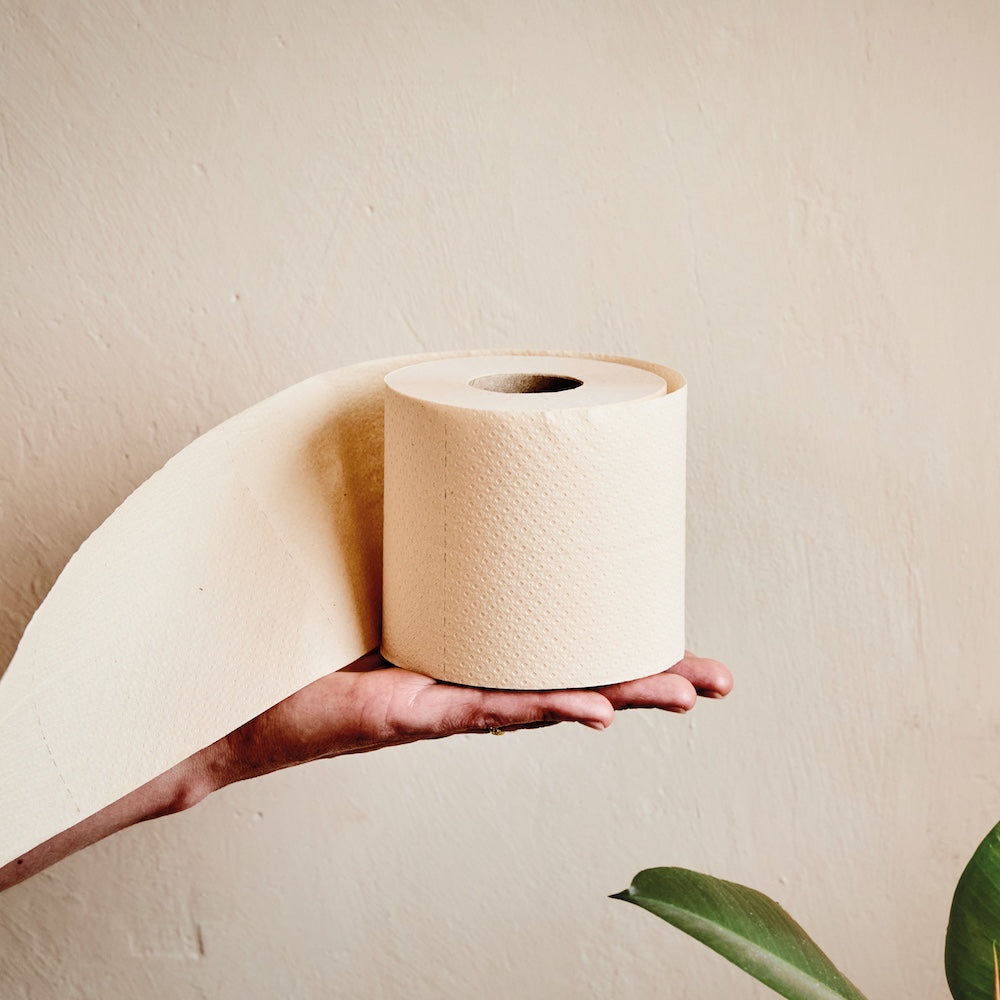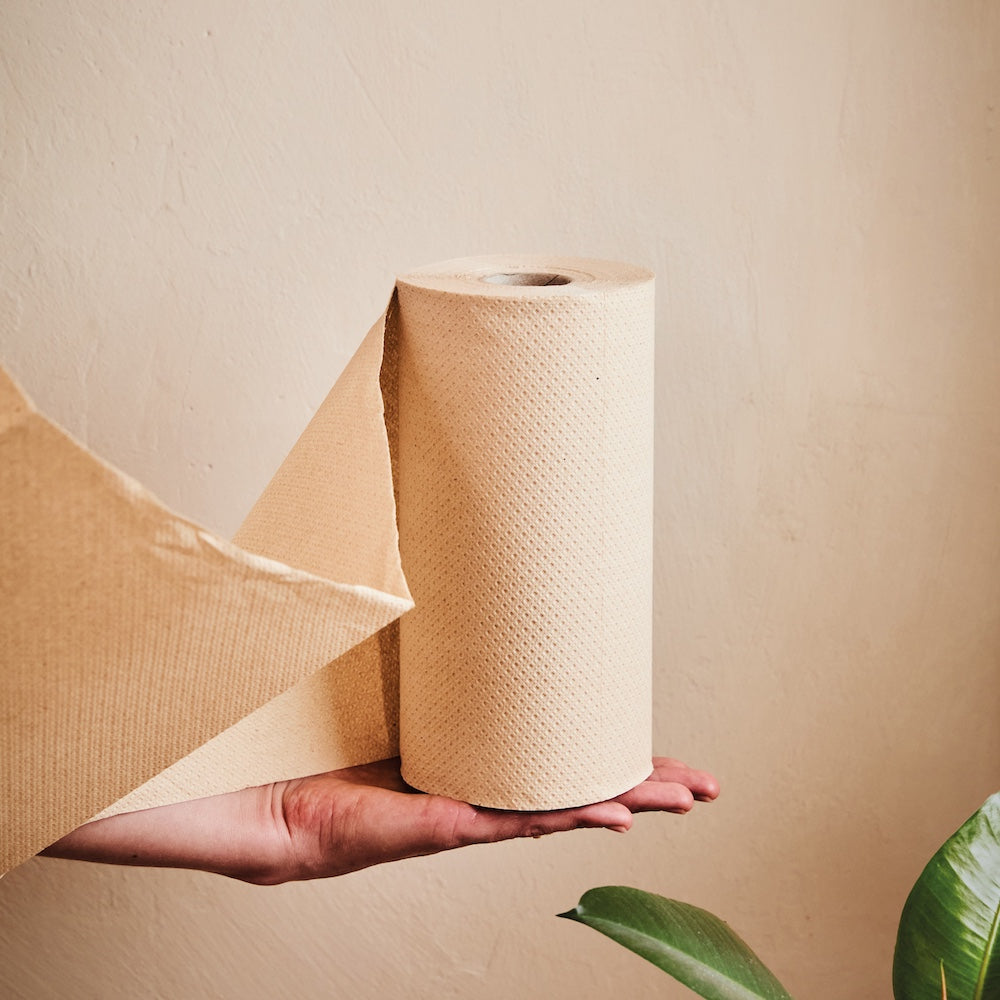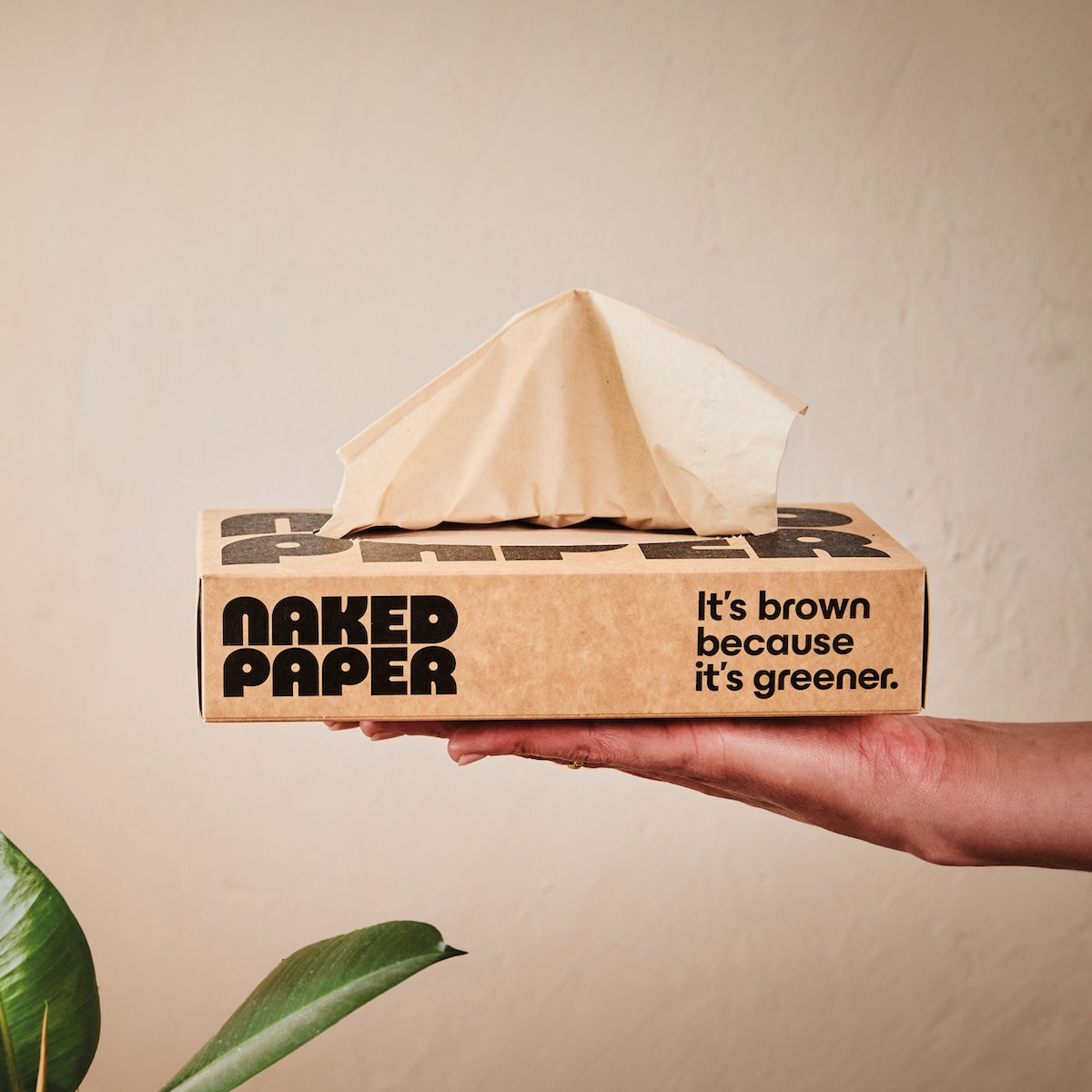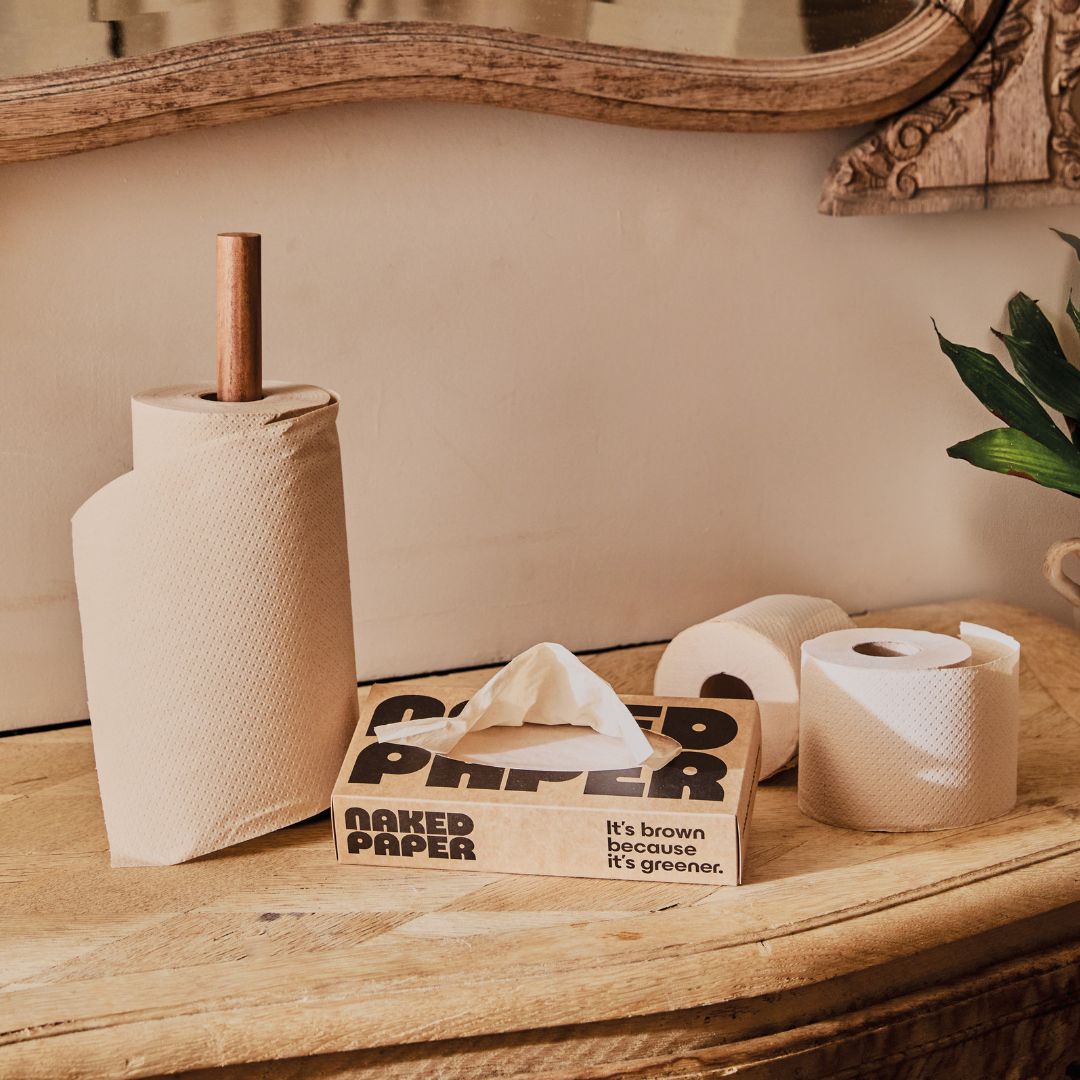Beyond the bog standard: five years of Naked Paper

When we launched Naked Paper five years ago, we expected to stand out. Selling bleach-free, brown toilet paper is a guaranteed conversation starter; we knew people would notice, we just didn’t know if they’d get on board.
Companies like Naked Paper are sometimes called “challenger brands.” It sounds a bit corporate but we identify with the general idea. Being a challenger brand means you’re showing up to an established industry, asking awkward questions, and seeing if you can push the needle in the direction of widespread change.
Five years in we are starting to see the difference. Our peers in the industry are picking up ideas that once looked too different, too inconvenient, or, let’s be honest, too brown.
It’s great to see. We want to have a positive impact on our own terms, but if we can shift the industry standard, that’s where the real change happens.
So we thought we’d take stock of the changes we’re proud to see, and the places where we’re still the odd roll on the shelf.

Bleach-free toilet paper
We’ll start in the obvious place; our colour.
For years, toilet paper has been marketed as white and bright. The fact that toilet paper was bleached was a selling point in the days when a lot of people still used the less hygienic option of newspaper, and the convention stuck.
But times have changed. When we founded Naked Paper in 2020 we decided we were happy with beige-toned tissue if it meant we could skip the harsh chemicals. We were delighted to find out, very quickly, that we weren’t alone; thousands of people got on board the brown toilet paper train and helped us grow.
Fast forward five years, and we’re seeing the beige rollout across the industry. Cheeky Panda has begun offering natural coloured bamboo toilet rolls. Bumboo has joined in with their own unbleached products. Both still sell bleached options but the fact that natural brown shades are now appearing in the warehouses and websites of other companies is great progress.
We’d love to see brown toilet paper become as normalised as reusable shopping bags or plant milk, and every brown roll out there is a step in the right direction.

Better, boxier, recycled toilet paper
Before the days of bamboo and unbleached, eco toilet paper meant recycled toilet paper. It’s a simple way to cut impact; take waste paper that already exists, and turn it into disposable, flushable tissue.
But what happens if there’s less waste paper to go around?
That’s the situation that other companies that make recycled rolls are facing. For years, the main category of waste paper used to make toilet rolls came from offices; printed documents and marketing materials.
But with more people working from home, and more work being done with screens than paper, the supply of office paper is running low. This means supply chains for recyclable paper are stretched thinner, collection runs take longer, and the gaps are quietly being filled with virgin fibres.
So when we came to make our own recycled tissue products, we wanted to think outside the box. Or rather, think about the box, because in 2023 we launched recycled rolls made from an abundant material hiding in plain sight: cardboard boxes and packing paper. With home deliveries on the rise there are piles of lovely brown paper and card streaming into recycling centres. Why not turn them into something useful?
Since launching our recycled products, we’ve streamlined our supply by working directly with local supermarkets to collect more boxes in one go. Following our launch, Tesco have seen the sense in the cardboard box to toilet paper pipeline. In 2024 they launched their own recycled toilet paper made from cardboard.
Their version comes wrapped in plastic, which we hope will change, but it’s still a great step by a huge retailer. And because cardboard pulp comes out a soft brown colour, rather than the unappealing grey of pulped office documents, there’s no need to bleach.
If more supermarkets follow suit, cardboard could overtake office paper as the main source of recycled fibre for recycled toilet rolls. This would cut road miles and bleach, and close the loop on a category of waste that is becoming more and more abundant.

Lower emission loo-roll
It’s great to see toilet rolls with less chemicals and better raw materials popping up across the market, but if we’re going to really start cutting the impact of toilet paper, we need to think about energy.
When you make toilet paper, or any tissue product, you start with a wet pulp that you need to dry out into solid sheets. This change from liquid to solid requires a huge amount of energy, specifically heat.
Most of the energy spent in making toilet paper is spent making this heat, so it’s where the emissions are highest. European manufacturers generally use natural gas to generate the drying heat, which means huge amounts of CO2e entering the atmosphere as the tissue progresses from wet to dry.
Some other eco-toilet rolls will try to pay this climate debt with offsetting, but we don’t believe in offsetting at Naked Paper. Instead, we have actually changed our manufacturing processes so we use locally-renewable biofuels instead of natural gas, meaning no fossil fuels and zero emissions from the manufacturing stage.
We’ve been making toilet paper in this way without fossil fuels since the end of 2021. Four years later we’re now seeing tissue industry giants like Kimberly-Clark and Metsä announce plans to move more of their own factories off fossil fuels within the next five years.
It’s fantastic to see. While we probably can’t take the credit for changing the course of such huge organisations, we are proud to stand as an example. At Naked Paper we’re proving that fossil fuel free manufacturing isn’t just a goal for the future, it’s possible today.
In fact, it’s already being done.

Wish list: More climate labelling and clear green claims
We’ve come a long way in five years, but there are still areas where we think the industry needs a bit of a push.
Climate labelling. At Naked Paper we’ve been inspired by other companies like Oatley and Allbirds that publish the climate footprints of their products. Since 2023, we’ve done the same, and we’d love to see this become the standard for tissue companies. It would incentivise better supply and manufacturing decisions, help customers choose wisely, and foster the best kind of competition in our industry.
Green claims. This one is close to our hearts. In 2024 we had all of our environmental credentials independently audited, linked to evidence, and published openly on our site, meeting the standards of the Competition and Market Authority’s Green Claims Code.
We’re challenging the rest of the industry to follow suit. If you’re calling a product “non-toxic,” “unbleached,” or “environmentally friendly,” you should be able to describe what you mean by that, and provide the evidence you’re using. Other companies have told us that they’ll be using our green credentials page as the model for their own reporting, and we’d love to see the standard spread.

Looking back, rolling forward
Five years in, we’re proud of the way Naked Paper has grown. And we’re doubly proud that we’re not the only tissue company talking about bleach, cardboard, or fossil fuels.
But, as any personal trainer will tell you, the best way to improve isn’t by comparing yourself with others, but comparing where you are today with where you were yesterday.
As much as we love to see the needle shift, the best way to move things forward is to keep raising the bar for ourselves.
We’ll have more on our latest step forward in our next post. And we’ll keep working on new ways to manufacture sustainably, communicate transparently, and keep things rolling in the right direction.
Want to join us?
Recent blog posts
-

Beyond the bog standard: five years of Naked Paper
When we launched Naked Paper five years ago, we expected to stand out. Selling bleach-free, brown toilet paper is a guaranteed conversation starter; we knew people would notice, we just didn’t know if they’d get on board. Companies like Naked Paper...
-

Introducing recycled kitchen roll and tissues
At Naked Paper, we like to think that change can happen in the most everyday parts of life. In fact, the everyday parts of life, like toilet rolls for example, are often the best place to make changes. When daily-use...
-

What goes into our tissue products?
We don’t say that Naked Paper tissue products are “chemical free,” because everything is made of chemicals. The natural pine sap glue that holds our tissue plies together is, strictly speaking, a chemical compound. So is water. What we do say...







